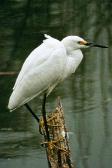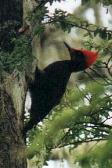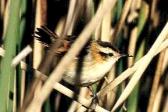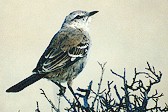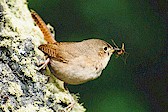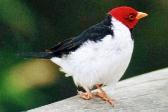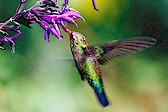 |
photos
of wild animals of ARGENTINA
|
 |
||
|
|
|
|||
|
fotos
de animales silvestres de
ARGENTINA
|
||||
Top 10!
My best shots
1. Scarlet-heaeded Blackbird(PASSERIFORMES - ICTERIDAE:
Amblyramphus holosericeus)
This is
one of my favorite shots. It is not only a spectacular bird - it is also shy,
hard to approach, and its population is reducing. So it is surprising that
it can still be found in urban reserves such as Ribera Norte (northern suburbs
of Buenos Aires) - where it even breeds - and sometimes can be seen in the
Ecological Reserve of Buenos Aires City (Costanera Sur). This photo is the
result of various visits to Ribera Norte with the single-mineded purpose of
capturing this species on film. The luminosity of the scarlet feathers is
so great that (even on clowdy days, when it is more easily observed) it would
seem that is had a strong lightbulb switched on inside its body. Contrasting
with this is the darkest black known to nature (as W. H. Hudson once worte
about this species). It has more than one call: either a high-pitched whistle,
comprised of about 3 or 4 monotone notes in rapid sucession, or a high "E"
note which slides down (glissando-syle) to an "A" note. If
you want to see this species it is important to know the calls, as it is often
hidden in the reeds, and exposes to vocalize.The
conservation of the reedbeds in which it breeds are key to the continuity
of this species on the coast of Buenos Aires.
2. Snowy Egret (ARDEIFORMES - ARDEIDAE: Egretta thula)
Photo taken at the Reserva Ecológica Costanera Sur. Note the "yellow
gloves" that it appears to have on its feet.
3.
Magellanic Woodpecker (PICIFORMES - PICIDAE: Campephilus magellanicus)
A juvenile. We found it with its parents in a Ñire forest (Nothofagus
sp.) in Tierra del Fuego (Estancia Cabo San Pablo). It was a thrill to
discover them!
4.
Great Kiskadee (PASSERIFORMES - TYRANNIDAE: Pitangus sulfuratus)
Token at Ribera Norte reserve, Acassuso, Province of Buenos Aires.
This shows one of the characteristic postures of this species: perched on
an emerging rod, waiting for a tadpole or small fish to swim by below.
5.
Wren-like Rushbird (PASSERIFORMES - FURNARIIDAE: Phleocrytpes melanops)
This photo was taken at the Otamendi nature reserve. It is one of my favorite
species, seen here as it moves tirelessly through the reeds, its true and
proper home. It is easy to hear, mainly in summer, as it produces an endless
series of "tick" sounds, at a rate of 2 tor 3 per second, rather
resembles a cricket. But it is not always seen!
6.
Patagonian Mockinbird (PASSERIFORMES - MIMIDAE: Mimus patagonicus)
Posed on a native bush in Punta Cana, Península Valdes, Chubut. For
me this photo is a nice reminder of my trips to Patagonia and it also shows
the sublte colors of the species, which is very common in the area.
7.
House Wren (PASSERIFORMES - TROGLODYTIDAE: Troglodytes aedon)
On a Lenga tree (Nothofagus sp.) in a forest near Ushuaia, Tierra del
Fuego. The little spider held in its beak was meant to be fed to its chicks,
but since there was a cat in the vecinity (and also a photographer!) the little
bird went to a great deal of trouble to produce distractions so as not to
disclose the location of the nest, hidden deep within a thick clump of bushes.
(Troglodytes = cave dweller).
8.
Yellow-biled Cardinal (PASSERIFORMES - EMBERIZIDAE: Paroaria capitata)
A typical shot for an urban reserve, with the bird perched on a railing. This
is at the Reserva Ecológica Costanera Sur, Buenos Aires. The little
foot turned back is probably the result of an attempt at capturing the bird,
which is done using glue. The infamous "goo" is applied to branches
and wires, and once the bird lands there it cannot escape, except perhaps
by damaging or amputating its own foot. Unfortunatley there are still people
who do such things - and people who enjoy keeping birds in a cage.
9.
Red-backed Hawk (FALCONIFORMES - ACCIPITRIDAE: Buteo polyosoma)
It is not often that one can get close to a raptor. In this case it proved
well worth while to stop on the road in Valdes Peninsula, as this splendid
hawk, most likely a female, allowed me get real close with the camera before
flying off. Let us hope that her trusting is not misused by some visiting
dad who wants to show his son how manly he is, by aiming at it with something
else...
10.
Glittering-bellied Emerald (TROCHILIFORMES - TROCHILIDAE: Chlorostilbon
aureoventris)
Taken at Ribera Norte reserve, Acassuso, in summer. This photo is not so hard
to take, provided you set up shop next to the flowers that the species feeds
on - and wait. The lovely purple flowers are Salvia guaranitica, a
native species especially adapted to polenization by hummingbirds. When the
beak is inserted into the flower a mechanical device within the petals causes
a pollen-loaded stamen to move down and touch the bird's head. It is not uncommon
to see pollen on one of these birds, causing many a birder to become confused
when trying to identify the species! The blue on the tail differentiates this
species from the other hummingbird that is common near Buenos Aires: the Gilded
Sapphire (Hylocharis chrysura) whose tail is metallic bronze.
Volver al Portal en Español / Back to Home Page in English

